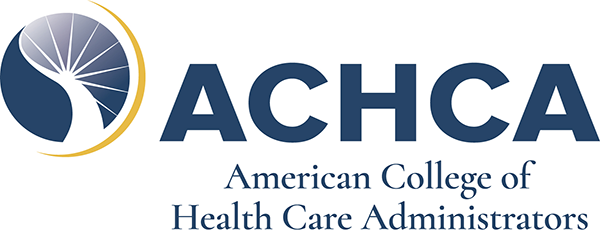Unlocking the Patient-Driven Payment Model’s Nontherapy Ancillary Component
 Skilled nursing facilities (SNF) began operating under the Patient-Driven Payment Model (PDPM) on October 1, 2019. Many current SNF employees have only been exposed to the Resource Utilization Group (RUG) model that was retired on September 30, 2019. The RUG model included therapy groups that ultimately trumped almost anything clinical being treated in the SNF. This may have resulted in minimum data set (MDS) assessments under the RUG model that didn’t include all diagnosis, condition, and treatment information simply because it didn’t affect reimbursement.
Skilled nursing facilities (SNF) began operating under the Patient-Driven Payment Model (PDPM) on October 1, 2019. Many current SNF employees have only been exposed to the Resource Utilization Group (RUG) model that was retired on September 30, 2019. The RUG model included therapy groups that ultimately trumped almost anything clinical being treated in the SNF. This may have resulted in minimum data set (MDS) assessments under the RUG model that didn’t include all diagnosis, condition, and treatment information simply because it didn’t affect reimbursement.
The MDS assessment was originally created to assist SNFs with developing a comprehensive care plan for residents admitted to a SNF. In the 1990s, the MDS also became a payment tool under the RUG payment model. Consistent focus under the RUG model was on accuracy of therapy days and minutes captured on each MDS assessment. The number of days and minutes of physical and occupational therapy and speech-language pathology services was ultimately the deciding factor regarding RUG group and daily payment amount.
The PDPM is based on patient characteristics and how specific conditions, diagnoses and treatments may affect each patient’s rehabilitation. Under the PDPM, providers receive payments from six components for each Medicare Part A patient. Five of those components are calculated based on information captured on an MDS assessment, including resident diagnosis, condition and treatment information. The sixth component is a noncase mix component that’s determined by a SNF’s geographical location. An MDS assessment’s accuracy is critical to appropriate Medicare Part A reimbursement for skilled patients.
The nontherapy ancillary (NTA) component provides an opportunity to capture points based on 50 different diagnoses, conditions and services that may be a predictor of increased clinical complexity and care cost. The NTA component comprises six case mix groups. Each case mix group has a corresponding case mix index. The case mix index is the multiplier for the NTA component base rate with some additional adjustments for wage index, value-based purchasing and quality reporting programs. The NTA case mix group is determined by the number of points captured for each patient based on the 50 items. The NTA dollar amount is then tripled for days one, two and three of the skilled stay. The only item for the NTA component that isn’t captured on the MDS is an HIV/AIDS diagnosis with a diagnosis code of B20. This specific code must be included on the UB-04 billing claim form. This is because some states don’t allow this information to be captured on the MDS. If this diagnosis code is included on the UB-04 billing claim form, eight points will be added to the NTA component. The other 49 items must be coded appropriately on the MDS.
As mentioned above, one condition must be on the UB-04 billing claim form to capture the corresponding eight points. SNFs can capture 22 of the diagnoses, conditions or services on the MDS by providing a simple acknowledgment in the appropriate MDS sections. The remaining 27 items must be captured with a specific diagnosis code in MDS section I8000. Some of the 27 conditions that require specific diagnosis codes in section I8000 allow for numerous different diagnosis codes.
BKD has developed an NTA tool to help providers appropriately capture patient diagnoses, conditions and services provided during the skilled stay. The tool is based on the flow of MDS information and includes the source, which is where the information should be coded on the MDS, the condition/extensive service as listed for the NTA component, examples, tips or instructions for coding and the number of points for each item. In addition, the tool’s Diagnosis section provides clinicians with a list of all diagnoses and conditions that must be included in section I8000. Under the Examples column, there may be only a few codes or numerous codes. CMS also offers a mapping tool that allows providers to search specific diagnosis codes to see if they’re included in the NTA items that require a diagnosis code in section I8000.
Prior to or upon admission, providers should begin researching the medical record information from the referral source to determine all current diagnoses and conditions that affect the patient’s care plan. Providers also must include all skilled services that have been or will be provided during the skilled stay. Providers may need to enlist the assistance of physicians and/or their extenders (physician assistants, nurse practitioners, etc.) when clarification regarding specific diagnoses or conditions is required. Providers also need a process for reviewing the SNF medical record for the MDS look-back period to pull out any new problems or concerns that must be part of each patient’s care plan.
MDS personnel need to be proficient at looking up ICD-10 codes in a current coding manual and understand how those codes map to the 50 items that affect the NTA component. The NTA component dollar amount for days one, two and three of the stay is tripled to assist with medication and supply costs. Providers that don’t capture appropriate MDS information could potentially leave money on the table.
If you have questions regarding PDPM, appropriate MDS coding, or BKD’s NTA tool, please reach out to your BKD trusted advisor. This article was written by Sherri Robbins, Senior Managing Consultant.



